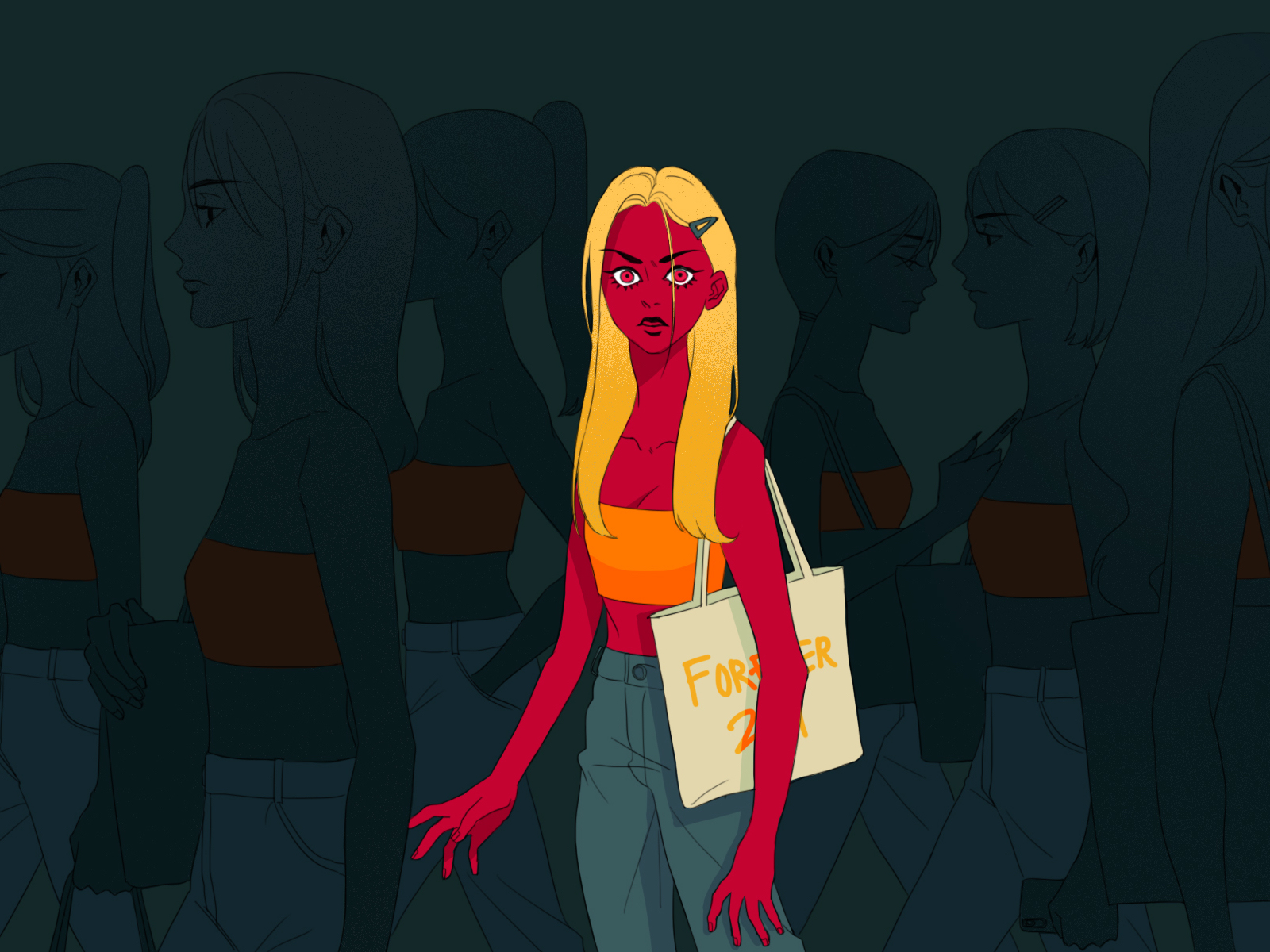As a teen coming from a low-income household in a small town, I saw trips to the nearest city’s mall as a special event. Unlike the Walmart and the lone department store in my hometown, the mall was packed with thousands of the season’s most trendy items. And while most of these items were ones that I could not afford, the one place I could always rely on for inexpensive fast fashion was Forever 21.
The overcrowded store reeked of cheap fabric and was never short of the tacky designs that my adolescent self loved. There was a never-ending supply of $10 jeggings, faux leather bags and T-shirts flaunting phrases like “Movies. Pizza. Sweats.” Forever 21 was the ideal shopping destination for any wannabe it-girl.
Moreover, as a staple of mall culture, Forever 21 was an icon in the apparel industry for years. The company’s oversaturated inventory remained relevant in the wake of online shopping and benefited from their ability to reach a wider consumer base than before. For consumers in rural areas, the movement of fast fashion to an online space meant a wider and more affordable selection of apparel.
If anyone is upset about forever 21 going bankrupt remember that fast fashion is second as the world’s largest polluter.
— Paula (@HARRIESCHERRYS) August 29, 2019
The promise of the latest trends at dollar store prices seemed too good to be sustainable. But it wasn’t. Forever 21 was estimated to be worth over $6 billion in 2015. However, many consumers failed to realize the true cost that came with each purchase.
In 2016, Forever 21’s American-made goods were produced by workers in California making $4 an hour — the minimum wage at the time being $10 an hour. Materials and labor sourced internationally also point toward worker exploitation and unethical practices.
Worker exploitation isn’t the only cut corner contributing to dirt-cheap prices. Products distributed by Forever 21 are notoriously low quality, meaning a cute top is doomed to become unwearable within 3 washes. Because the company also relies on a “trendy” factor to make sales, many styles are unflattering when actually worn or go out of favor within a few months. Consumers would likely be better off investing in sustainable fashion, which strives to provide timeless pieces that will hold up for years.
It appears buyers have finally caught on to that notion. Fast fashion has met its demise, and companies are being forced to either adapt or go under. Following other business giants Charlotte Russe, Papaya and Nasty Gal, Forever 21 has become the most recent, and perhaps the most iconic of these apparel brands to rack up debt.
The company’s recent talks of filing for bankruptcy has been followed by a collective sigh of relief. Critics of the brand have taken to Twitter to express the multitude of reasons they have for their distaste.
While millennials were the generation to give rise to fast fashion, their successor, Generation Z, holds a new set of values that are, in part, responsible for the change in consumer trends as this generation continues to age into the consumer base. These values include environmental and ethical concerns and a rising interest in resale and designer pieces, which offers some explanation for the decline of buyers’ interest in cheap apparel.
With Forever 21 going bankrupt, I have no idea where I'm going to get dresses displayed as size 14 that are actually size 4.
— Charlotte Clymer 🇺🇦 (@cmclymer) August 29, 2019
Consumers have been protesting against fashion brands for years in regards to the environmental cost of disposable fashion. The oversaturation of merchandise has led to textile waste and increased consumption habits. From 2000 to 2015 the average consumer saw a 60% increase in clothing purchases.
Of course, as people buy more and more, production also must increase, which means more pollution and more non-compostable waste.
Gen Z, however, seems to be more conservative.
In recent years, people have been spending less on clothes, and Gen Z is at the forefront of this change, by consolidating their professional and non-professional wardrobes into one.
The movement away from a professional wardrobe doesn’t mean Gen Z isn’t up for fashion. Instead, the up-and-coming generation is changing it, favoring “wokeness” over a low price tag. Not only has thrifting lost its taboo, giving rise to the popularity of environmentally-friendly, affordable resale, but buyers are also opting for brands that focus on gender neutrality, size diversity and authenticity. Even prominent Instagram influencers have their hand in sustainable fashion.
According to a report by Mckinsey & Company, nine out of 10 Gen Zers “believe companies have a responsibility to address environmental and social issues.” And it shows. Many companies have striven to adapt to Gen Z’s strong set of values, a change Forever 21 failed to make.
But fast fashion was doomed regardless. Gone are the days where consumers catered their wardrobes to the trends. Now, dressing is all about the individual’s personal aesthetic.
Gen Z is hellbent on curating looks that express their individuality. They opt for hard-to-find pieces and smaller retailers, avoiding big brand names and tacky logos. Fast fashion simply isn’t structured with niche consumers in mind. And it’s for the best.
The death of fast fashion is long overdue. From the creation of sweatshops to the environmental impact to the atrocious designs, disposable fashion has proven itself to be anything but ideal.
















